
The bank for the little mining town of Imperial occupied a building that accomplished its architectural mission perfectly. It was small, but it gave the impression of being respectable and substantial—a place where your money would be safe.





The bank for the little mining town of Imperial occupied a building that accomplished its architectural mission perfectly. It was small, but it gave the impression of being respectable and substantial—a place where your money would be safe.





Press C. Dowler, prolific architect of schools, banks, and telephone exchanges, designed this solid-looking classical bank, and the Pittsburgh Daily Post tells us that the opening (October 10, 1021) was a gala occasion.


The building no longer houses a bank, but almost nothing about the exterior has changed since that opening day, except that the big windows may not originally have been filled in with glass block.

A look down the Mill Street side of the bank, with the Ohio Valley Trust Company building in the background.

Mill Street does not meet Fifth Avenue at exactly a right angle, which leaves room for this curious triangular pit with a basement entrance.

A lantern on the front of the building.

A picture on a sunny day.

A small but very rich classical bank still in use as a bank.


The clock suggests that the bankers will consult an astrologer before investing your money.


Stock-photo sites will charge you good money for patently metaphorical pictures like these. Yet old Pa Pitt gives them to you for free, released with a CC0 public-domain donation, so there are no restrictions on what you can do with them.


Cameras: Kodak EasyShare Z1285 (HDR stacks of three photographs); Canon PowerShot SX150 IS.

One of several round banks Mellon Bank built in the modernist era. It is still a bank, now belonging to Citizens Bank, Mellon’s successor in retail banking.

We also have a less abstract picture of the whole building.

The Penn Avenue front is now a restaurant, but it would not be hard to guess from the Ninth Street side that this used to be a bank: the National Bank of Western Pennsylvania. Addendum: The architects were George S. Orth & Brother; the bank was built in about 1897.1

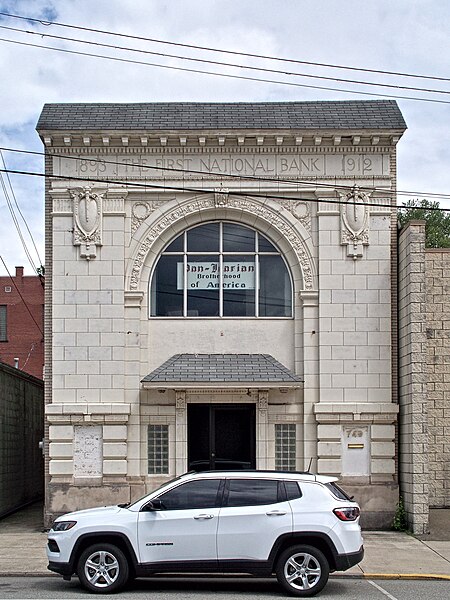
A rich-looking little bank dripping with terra-cotta ornaments on the façade. It later became the headquarters of the Pan-Icarian Brotherhood, a fraternal society whose membership “is open to anyone over 18 years of age (or their spouse) whose ancestry can be traced to the eastern Aegean Greek islands of Icaria or Fournoi.” These two islands made up an independent country, the Free State of Icaria, for a few months in 1912—which, by an odd coincidence, is the year this bank was built. The Pan-Icarian Brotherhood was founded in Verona; it now has a number of other chapters around the country.

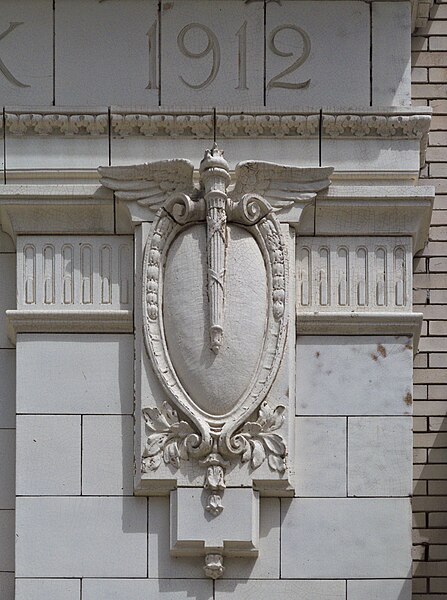
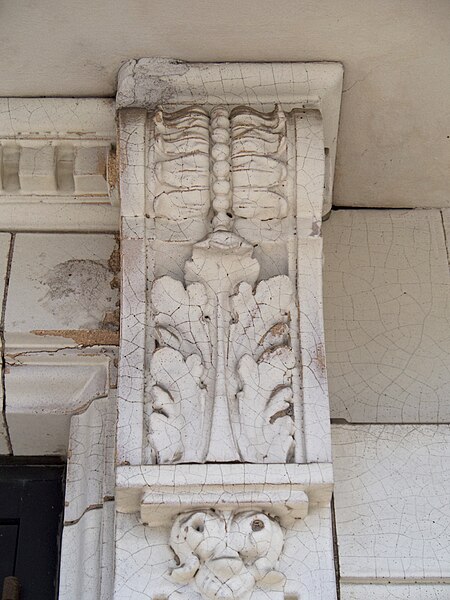
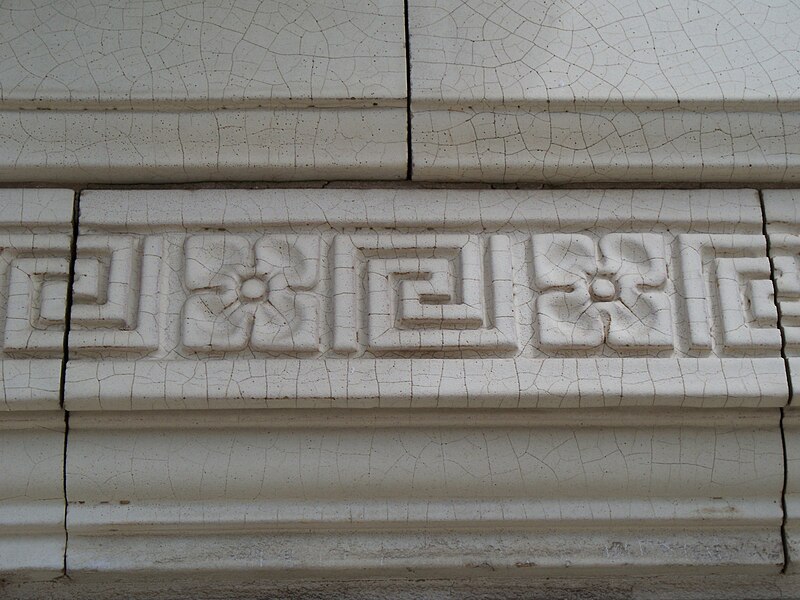


This building originally housed a bank, and was still a PNC branch until a few years ago. It was built in 1926, and it straddles the line between classical and Art Deco.
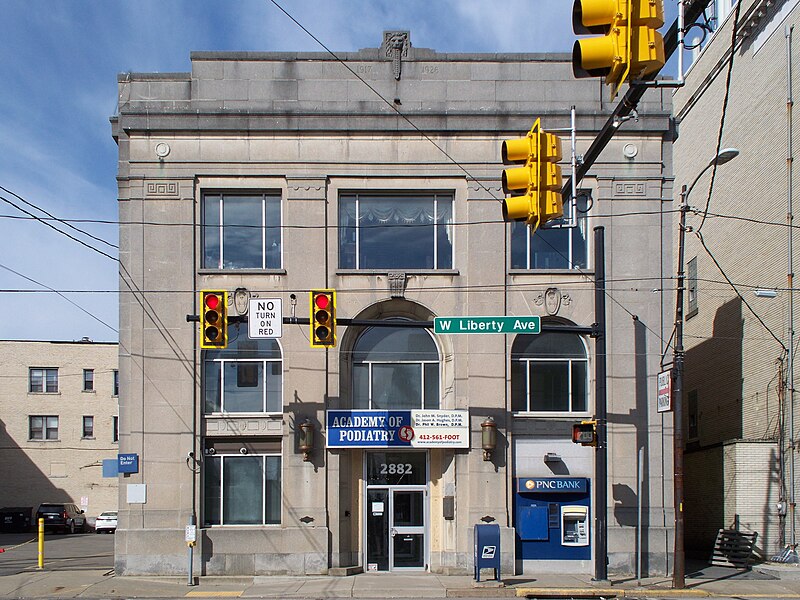
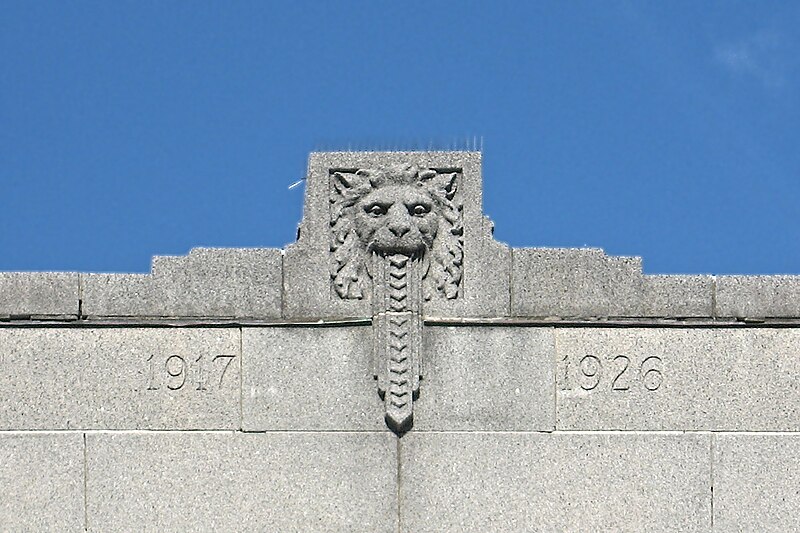
You know it’s a bank because it has a vomiting lion at the top of the building.

As with many banks, the elaborate stone front hides a building mostly clad in cheaper and more prosaic brick.
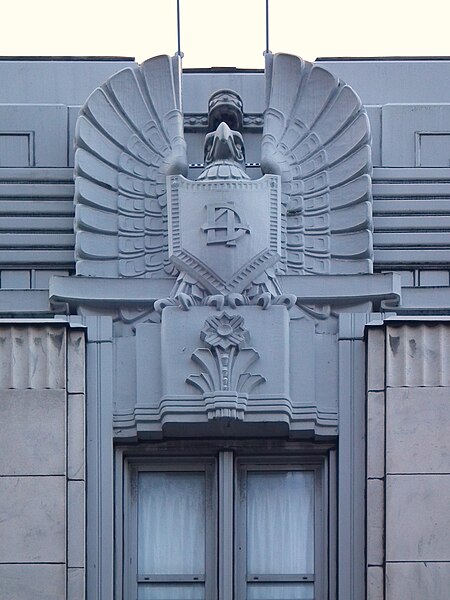
This building, put up in 1930–1931, was a branch of the Federal Reserve Bank of Cleveland, and the Clevelanders Walker & Weeks were the architects—but with Henry Hornbostel and Eric Fisher Wood as “consulting architects.”1 Old Pa Pitt doesn’t know exactly how far the consulting went. At any rate, the architects chose sculptor Henry Hering, who had done several prominent decorations in Cleveland, to create the cast-aluminum reliefs for this building. The picture below is from 2015, but it will serve to show the placement of the reliefs:

The three main figures are obviously allegorical; they seem to represent industry, agriculture, and the professions.
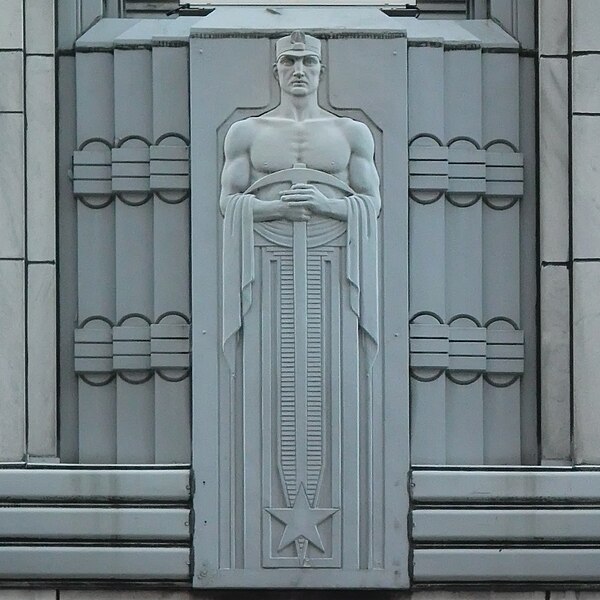
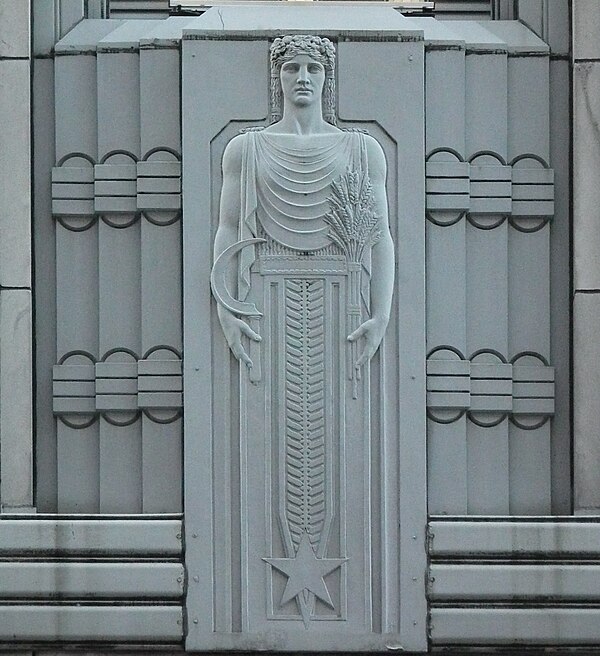
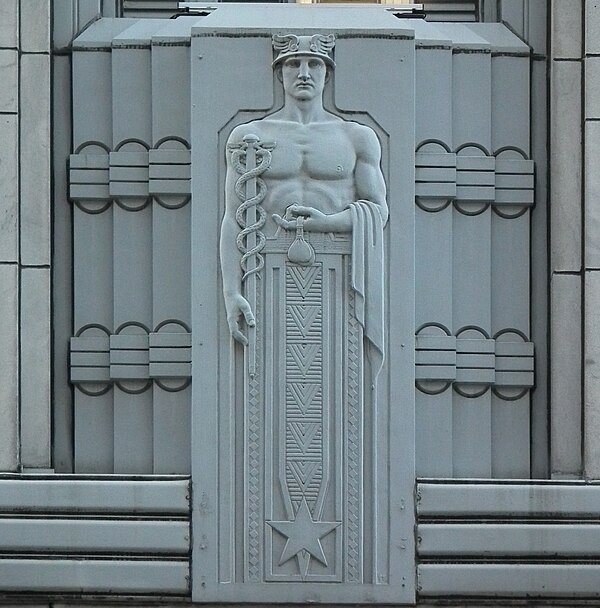
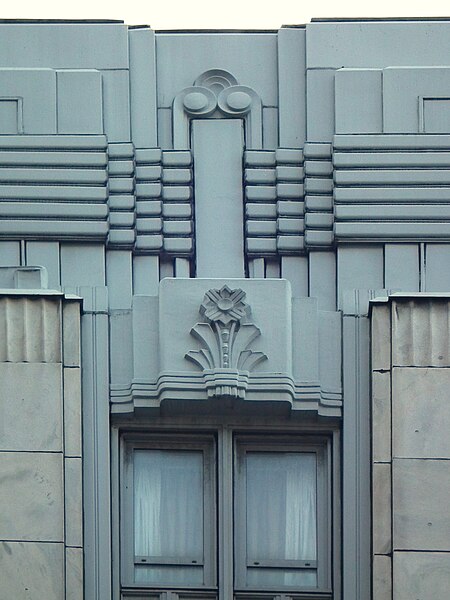

Fourth Avenue, the second-biggest American financial center after Wall Street, was famous for its bank towers. But one bank decided to go long instead of high. The Colonial Trust Company built a magnificent banking hall that ran right through from Forbes Avenue to Fourth Avenue, skylit all the way. Pittsburghers passing between Fourth and Forbes, especially in cold weather, would take the route through the bank so regularly that the hall became known as Colonial Avenue.
Frederick Osterling was the architect, and he designed this magnificent Corinthian face for the Forbes Avenue side.

What would a bank be without its lions?

Home-repair tip: if your pediment is broken, you can fill the gap with a baroque cartouche.
Two years ago, old Pa Pitt got pictures of the other entrances as well, so the rest of the pictures are reruns.
The Fourth Avenue side is in the same style, but narrower:

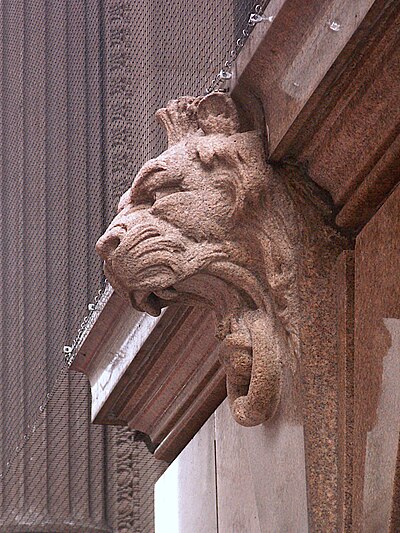
This side also has its lions.
In 1926, the bank decided to expand by building another equally magnificent hall perpendicular to the first, with an entrance on Wood Street. Osterling was the architect again—but fashions, and Osterling’s own taste, had changed.

Instead of florid Corinthian, this side is in a simpler Ionic style. The outlines are cleaner, and the wall of rectangular panes of glass and the shallow arch at the top seem almost modernistic. It is still a bravura performance, but perhaps a more perfectly controlled one.
Fortunately the whole building has been adapted as Point Park’s University Center, so it is not going anywhere, for the near future at any rate.

This splendid edifice cost about $100,000 when it was built in about 1905. The architects were McCollum & Dowler,1 and that Dowler is the young Press C. Dowler, who would practice architecture for two-thirds of a century and run through every style of his long lifetime, from Romanesque through Art Deco to uncompromising modernism. The building still stands today on Braddock Avenue, and the front still looks about the same.